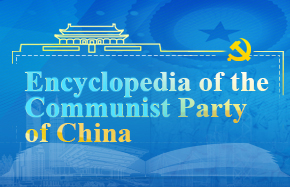Wonder who made the Terracotta Warriors? Read the signature
The best thing about science is that it's all about solving mysteries.
A new one comes from the world of archaeology and it's already making headlines around the world.
Evidence suggests Xi'an's fabulous 8,000-man, 300 BC Terracotta Army may have been influenced by ancient Greek sculptures, the headlines read.
"The figures' startlingly lifelike appearance could have been influenced by the arrival in China of ancient Greek sculptures," The Guardian reported. Greek sculptors themselves may have made their way to teach their techniques, one of the researchers suggested.
The scientist cited DNA evidence that Europeans were mingling genes in Xinjiang in the second century BC, when the Silk Road officially opened (1,500 years before Marco Polo hit it), so the time frame can be nailed down.
Li Xiuzhen, an archaeologist at the Xi'an site, said, "We now think the Terracotta Army, the acrobats and the bronze sculptures found on the site have been inspired by ancient Greek sculptures and art."
There's apparently no prior tradition of Chinese artisans making life-sized human figures, but new ancient artifacts are turning up in China all the time - and remember archaeology's cardinal rule: Absence of evidence is not evidence of absence.
Professor Lukas Nickel, chair of Asian art history at the University of Vienna, told Fox News that "the massive employment of sculpture in the mausoleum is totally unprecedented in the Chinese tradition" making it "likely that the skills necessary came not from China but from the outside".
Nickel also had some written evidence in the form of a record written about 100 years after the death of Emperor Qin, the ruler the 8,000-man Terracotta Army was crafted over four decades to protect.
"It states that the first sculptures the emperor made were intentional copies of other figures the Chinese had found at the western end of the Chinese world," he said.
A few days after the article went viral, Li Xiuzhen refuted the report, saying her remarks had been taken out of context and clarified to Xinhua.
"I think the Terracotta Warriors may be inspired by Western culture," she said, "but were uniquely made by the Chinese."
Dr Fan Zhang, Chinese art curator at the Asian Art Museum in San Francisco, said that the whole argument fuses at least two or more issues and makes a conclusion without any strong evidence.
"1) Did commercial or cultural connections between the Mediterranean world and China exist before 200 BCE?" he wrote in an email to China Daily, and "2) Were Chinese craftsmen inspired by Greek artisans to create life-size round sculptural work in a naturalistic style?"
The answer to question one, he said, is yes, for sure. "Chinese archaeologists have already found some evidence in the past three decades to prove trade between East and West around 200 BCE," he said. "There were not only contacts over land, but also on the seas."
As for the second question, there is no direct evidence, but he agrees that, "as some scholars have proposed decades ago, some artistic influence from the Hellenistic world can be observed in Chinese art during the late Warring States period".
"Artisans from the Hellenistic world, possibly South, Central or even West Asian peoples, might have ended up in China by 200 BCE," he said. "We depend on more archaeological finds to shed light on many interesting issues."
Gwen Bennett, archaeologist and assistant professor of anthropology and East Asian studies at McGill University, also decried the lack of data supporting the claims, writing in a Facebook post, "I think they are referencing the Xinjiang mummies without saying it, but their DNA evidence only indicates that they are most similar to Central Asian populations. It's a horrible stretch to claim they are Greek."
Bennett also notes that the Terracotta Army figures were made by the same craftspeople that worked at the factories that produced the pipes and tiles used for the city's drainage system. And every craftsman left his mark on every tile - and warrior - they made.
"And the names are Chinese names," she writes. "Foreigners in China at the time had distinctive names, so they can usually be identified."
As Li told Xinhua, "I am an archaeologist, and I value evidence. I've found no Greek names on the backs of Terracotta Warriors."
Contact the writer at chrisdavis@chinadailyusa.com.




















